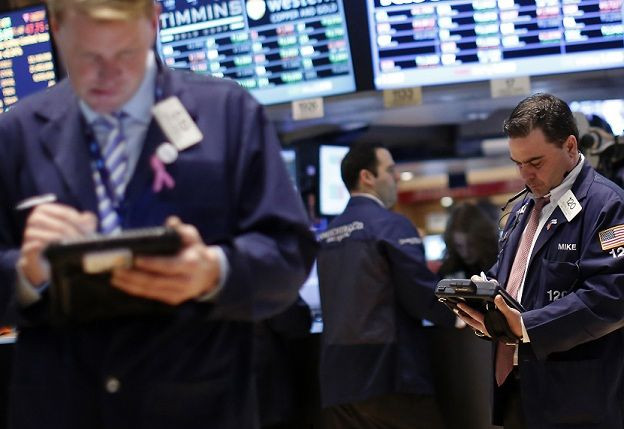Why US Investors Need To Keep One Eye On Washington, One On Oil
Analysis

Investors -- certainly those with positions in U.S. stocks -- would be well-served if they kept one eye glued to President Barack Obama’s and House Speaker John Boehner’s latest pronunciations inside the Beltway, and one eye on oil – the world’s most vital commodity, which once again is vectoring toward $100 per barrel.
Oil, as measured by West Texas Intermediate crude, traded up 33 cents Thursday afternoon to $97.34 per barrel.
Further, oil’s price is substantially higher if the Brent Crude metric is used. Brent is considered a more accurate reflection of current price conditions, due to a surplus of West Texas Intermediate oil at the Cushing, Okla., storage facility, which has lowered WTI’s price. Brent traded Thursday afternoon up 6 cents to $118.888.
And the reason one should stay tuned to the Democratic-Republican game of poker laced-with-brinkmanship is obvious enough. Once again, leaders of the parties – due to a seemingly continual inability to find common ground and compromise on issues where there is substantial disagreement – are running the risk of tipping the U.S. economy into a recession by not substituting less draconian spending cuts and tax increases for the “sequestration” – the roughly $85 billion in spending cuts agreed to earlier, split equally among defense and non-defense programs. A budget cut of that magnitude would almost certainly tip the economy back into a recession, most economists agree, and if that occurs, it would weigh on the U.S stock market.
Crude Awakening?
Concerning oil, the question is – is crude’s price approaching the danger zone?
No one knows precisely at what point oil begins to substantially constrain consumer spending and slow commercial activity – but this much is known: Every $1 per barrel rise in oil decreases U.S. GDP by about $100 billion per year and every 1 cent increase in gasoline decreases U.S. consumer disposable income by about $600 million per year.
To be sure, the flexible, dynamic and technologically advanced U.S. economy is more-energy efficient today than it was 20 years ago - even 10 years ago - and it will likely become more efficient in the decade ahead, but that doesn’t eliminate the fact that the United States remains an oil-dependent economy. Most cars still run on gasoline, trucks on diesel, and oil is also a major fuel for heat. (The natural gas production boom via hydraulic fracturing or ‘fracking’ and horizontal drilling has chipped away at oil’s dominance in commercial settings, but oil is likely to continue to dominate in the civilian transportation sector for at least the next 10 years.) The bottom line, for investors? Sustained high oil prices will continue to translate into bad news for U.S. GDP, corporate earnings growth, and by extension, for most U.S. stocks.
Further, psychological levels and outlook are important factors in the oil-GDP equation.
If the average U.S. price of gasoline, currently about $3.59 per gallon for regular unleaded as measured by gasbuddy.com, rises and stays above the psychologically significant $4 level, that would cause consumers to conclude that ‘$4 per gallon gas is back,’ and many consumers will likely adjust their discretionary spending. Similarly, an oil price that rises and stays above $100 per barrel has a comparable psychological effect.
Why is oil rising? Much of oil’s recent price rise can be attributed to institutional investors (IIs), who are piling into oil as both an inflation hedge, and as a hedge against a possible weaker dollar. (Oil’s price tends to rise as the dollar weakens). In addition, oil is also being pushed higher by II sentiment that, while hardly in a period of strong global GDP growth, the world economy has experienced the worst of the financial crisis, and that GDP growth in emerging markets (particularly China) and the United States is likely to be sufficient to push oil demand slightly higher, which is bullish for oil prices, but bearish for stocks.
Washington, Oil: Two Important Variables For Investors
Therefore, if comments from Obama and Boehner as we head toward the sequestration deadline of March 1 and the spring suggest gridlock remains the dominant mood in Washington, that would be a decidedly bearish development for the U.S. economy and, by extension, for the U.S. stock market. Conversely, a budget deal with less draconian spending cuts and tax increases would be good news for the economy and stocks.
Further, the U.S. economy can grow somewhat with oil at $100 per barrel and gasoline at $3.59 per gallon, but the odds of strong U.S. GDP growth above 4 percent with those energy prices are slim and none. Further, if West Texas Intermediate catches up with Brent and oil ventures toward $110, then $120, with gasoline trending toward $4.50 per gallon, oil enters the danger zone – a condition that would trigger widespread consumer and commercial cutbacks – which would be bad news for the economy and stocks. Conversely, if the price of crude declines, or at least doesn’t venture too far above $100, the U.S. economy will be able to grow at a slow to moderate rate – a scenario that will at least support U.S. stocks prices, if not send them higher.
Investing Requires Effort, Perseverance
No one ever said investing was easy. Trying to read the tea leaves in Washington while monitoring oil prices takes effort and perseverance. But if the Dems and Repubs in Washington are shouting at each other this spring and the price of oil soars past $100, know that the Dow’s lofty roughly 14,000 level will come under pressure.
--
Disclosure: Joseph Lazzaro has no positions in stocks, but does own U.S. Treasuries, municipal bonds, and real estate.
© Copyright IBTimes 2025. All rights reserved.





















